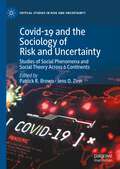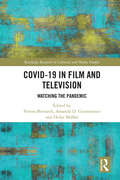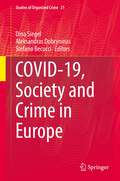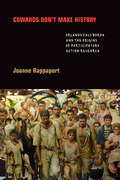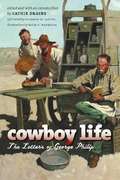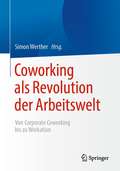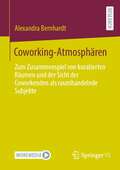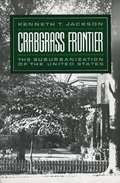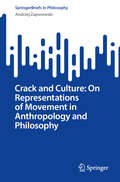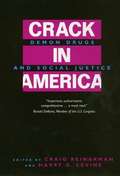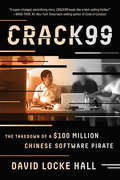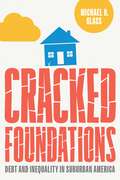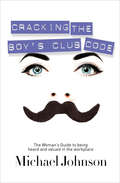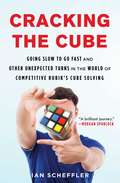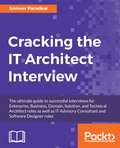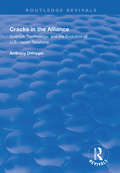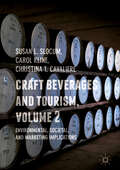- Table View
- List View
Covid-19 and Governance: Crisis Reveals (Routledge Studies in Emerging Societies)
by Jan Nederveen PieterseCovid-19 and Governance focuses on the relationship between governance institutions and approaches to Covid-19 and health outcomes. Bringing together analyses of Covid-19 developments in countries and regions across the world with a wide-angle lens on governance, this volume asks: what works, what hasn’t and isn’t, and why? Organized by region, the book is structured to follow the spread of Covid-19 in the course of 2020, through Asia, the Middle East, Europe, the Americas, and Africa. The analyses explore a number of key themes, including public health systems, government capability, and trust in government—as well as underlying variables of social cohesion and inequality. This volume combines governance, policies, and politics to bring wide international scope and analytical depth to the study of the Covid-19 pandemic. Together the authors represent a diverse and formidable database of experience and understanding. They include sociologists, anthropologists, scholars of development studies and public administration, as well as MD specialists in public health and epidemiology. Engaged and free of jargon, this book speaks to a wide global public—including scholars, students, and policymakers—on a topic that has profound and broad appeal.
Covid-19 and the Sociology of Risk and Uncertainty: Studies of Social Phenomena and Social Theory Across 6 Continents (Critical Studies in Risk and Uncertainty)
by Jens O. Zinn Patrick R. BrownThis book provides a global perspective on COVID-19, taking the heterogenous realities of the pandemic into account. Contributions are rooted in critical social science studies of risk and uncertainty and characterized by theoretical approaches such as cultural theory, risk society theory, governmentality perspectives, and many important insights from ‘southern’ theories.Some of the chapters in the book have a more theoretical-conceptual emphasis, while others are more empirically oriented – but all chapters engage in an insightful dialogue between the theoretical and the empirical, in order to develop a rich, diverse and textured picture of the new challenge the world is facing and responding to. Addressing multiple levels of responses to the coronavirus, as understood in terms of, institutional and governance policies, media communication and interpretation, and the sense-making and actions of individual citizens in their everyday lives, the book brings together a diverse range of studies from across 6 continents. These chapters are connected by a common emphasis on applying critical theoretical approaches which help make sense of, and critique, the responses of states, organisations and individuals to the social phenomena emerging amid the Corona pandemic.
Covid-19 in Film and Television: Watching the Pandemic (Routledge Research in Cultural and Media Studies)
by Verena Bernardi Amanda D. Giammanco Heike MißlerThis collection explores the impact of Covid-19 on the production and consumption of television and film content in the English-speaking world. Offering in-depth analysis of select on-screen entertainment, the volume addresses entertainment’s changing role during and following the Covid-19 pandemic. It also studies the pandemic’s incorporation into the narrative of numerous series, films, and other televised formats, capturing the moments and contexts in which these developments emerged. Chapters examine the pandemic’s impact both on a micro- and macro level, focusing on the content as well as form of TV shows and films. Bringing together an international team of scholars, the book offers a range of perspectives, exploring phenomena such as the ‘YouTubification’ of audience-reliant late-night television, as well as films and TV shows such as Superstore, Grey’s Anatomy, and The Good Fight.Given the pandemic’s lasting impact on the film and television industries, this book will be a valuable read for scholars studying audience and viewer reception of on-screen content, and the impact of crises on cultural industries. It will also appeal to researchers in cultural studies, popular culture studies, television studies, internet studies, film studies, and media studies more broadly.
Covid-19, Society and Crime in Europe (Studies of Organized Crime #21)
by Dina Siegel Aleksandras Dobryninas Stefano BecucciThis volume analyzes the development of the reactions to Covid-19 by governments, the public and the crime patterns in 16 European countries. All countries are members of the European Union and share common European norms and values, but the Covid-19 pandemic can serve as an example of how these norms and values are interpreted differently with regard to people’s trust in public institutions, governmental control strategies, dealing with fear, anxiety and other emotional responses to the new virus, crime patterns and law enforcement priorities to prevent and combat them. The volume provides empirical data based on available statistics, media analysis and qualitative data from interviews and observations, and examines the similarities and differences in crime patterns and the consequences for local communities and law enforcement priorities.
Cowards Don't Make History: Orlando Fals Borda and the Origins of Participatory Action Research
by Joanne RappaportIn the early 1970s, a group of Colombian intellectuals led by the pioneering sociologist Orlando Fals Borda created a research-activist collective called La Rosca de Investigación y Acción Social (Circle of Research and Social Action). Combining sociological and historical research with a firm commitment to grassroots social movements, Fals Borda and his colleagues collaborated with indigenous and peasant organizations throughout Colombia. In Cowards Don't Make History Joanne Rappaport examines the development of participatory action research on the Caribbean coast, highlighting Fals Borda's rejection of traditional positivist research frameworks in favor of sharing his own authority as a researcher with peasant activists. Fals Borda and his colleagues inserted themselves as researcher-activists into the activities of the National Association of Peasant Users, coordinated research priorities with its leaders, studied the history of peasant struggles, and, in collaboration with peasant researchers, prepared accessible materials for an organizational readership, thereby transforming research into a political organizing tool. Rappaport shows how the fundamental concepts of participatory action research as they were framed by Fals Borda continue to be relevant to engaged social scientists and other researchers in Latin America and beyond.
Cowboy Life: The Letters of George Philip
by George Philip Cathie DraineRattlesnakes and ornery horses, the dreaded Texas Itch, midnight rambles in graveyards, trips to Mexico, and hard riding on the last open range: George Philip recounts all these adventures and more with wit and humor. As a young man, George Philip emigrated from Scotland to escape a harsh apprenticeship. In 1899, he arrived on the doorstep of his uncle, James ("Scotty") Philip, patriarch of one of South Dakota's foremost ranching families. For the next four years, Philip rode as a cowboy for his uncle's L-7 cattle outfit during the heyday of the last open range. But the cowboy era was a brief one, and in 1903 Philip turned in his string of horses and hung up his saddle to enter law school in Michigan. With a law degree in hand, he returned to South Dakota to practice in the wide-open western towns of Fort Pierre, Philip, and then Rapid City. In these candid letters, Philip tells his children that his life was an ordinary one, but his memoirs quickly dispel that notion. He provides fascinating insights into the development of the West and of South Dakota. His writing details the cowboy's day-to-day work, from branding and roping to navigating across the plains by stars and buttes as the great open ranges slowly closed up. Philip's tales emphasize the simple pleasures and hard work of cowboy life. "The range country was largely peopled by young boys and young men," he wrote. "They were not arrayed in the spangles so liberally shown in the movies. They slept beneath the stars or the clouds, when they could get to it, and the rest of the time, they were dirty and sweaty and tired." The places and characters of the range find life in Philip's mixture of humor, hard-nosed "horse-sense," and poignant reflection.
Cowboy: The Ultimate Guide to Living Like a Great American Icon
by Matthew A. Pellegrini Rocco WachmanCelebrity host of CMT's Cowboy U Rocco Wachman's modern guide to being a cowboyCowboy: The Ultimate Guide to Living Like a Great American Icon is the first book to explore, through a pop-culture lens, the many facets of the cowboy life. This book entertains and educates with an insider's look at topics such as ranching, rodeos, chuck wagon cooking, cowboy music, country and western dancing, and most important, the cowboy spirit. Cowboy includes instructions, recipes, profiles, photographs, and trivia that vividly depict the day-in, day-out rituals of this iconic lifestyle and show what it meant to be a cowboy in frontier days, and what it means to be a cowboy today!A fresh take on all things cowboy, Cowboy is certain to appeal to the huge fan base of those who love all things Western.
Cowhand: The Story of a Working Cowboy
by Fred GipsonThis is the true story of a West Texas cowhand.
Coworking Atmospheres: On the Interplay of Curated Spaces and the View of Coworkers as Space-acting Subjects
by Alexandra BernhardtThe study by Alexandra Bernhardt deals with coworking spaces and their atmospheres. In addition to a comprehensive consideration of the role of atmospheres, the special significance of community in the context of these work spaces is examined in more detail. Two case studies in urban coworking spaces form the core of the investigation, following a qualitative research design oriented towards ethnography and a plurality of methods. In the context of the analysis, on the one hand, what constitutes coworking in everyday life and thus the new communality at work is considered: relevant practices and rituals, spatial arrangements and atmospheres are elaborated in their composition. On the other hand, coworkers, their spatial actions, and the attitudes associated with them come into closer focus: It is shown how users access coworking spaces as work and community spaces and what role atmospheres play. In addition, social entities are highlighted that are taken up by coworkers in relation to their coworking space and that help shape everyday coworking space life. Tensions that arise from the coexistence of community and service logic are also uncovered, and how they are dealt with is examined in more detail.
Coworking Spaces: Alternative Topologies and Transformative Potentials
by Janet Merkel Dimitris Pettas Vasilis AvdikosThis contributed volume considers the emergence of coworking as centered in labor issues. More specifically, its chapters consider it as a coping mechanism in the worldwide rise of independent modes of work (i.e., self-employment) that leaves more and more workers exposed to precarity as they must organize and manage their own labor. Grounded in this perspective, this volume aims to understand the transformative social and political potentials emerging through coworking as a social and spatial practice. There is a distinct lack of discussion within coworking research on the emancipatory potentials of coworking—and if it is discussed, more cautionary views prevail, highlighting the ambivalence of coworking spaces both as a space of alternative economic practices and as integrated into market economies. The aims of this collection are twofold: First, it aims to make visible the plurality of existing practices around shared resources in coworking and the assemblages of human and non-human actors as agents of change associated with coworking and the re-organization of work and labor power. And second, it aims to develop a more emancipatory narrative for coworking and the role of coworking spaces for workers but also the different spatial contexts in which these spaces are situated. A narrative that does not emphasize entrepreneurship or coworking as the epitome of the ‘neoliberal entrepreneurial self’ as in the dominant interpretations in the current research, but rather one that centers coworking in the creation of meaningful, careful social relationships, supporting empathy and an ethics that recognizes mutual interdependencies and builds a foundation for social change. So, it is about alternative narratives, emancipation politics and the wider social role that coworking spaces might play in neighborhoods, cities or beyond because they are crucial contexts for the formation and maintenance of social relations. With this specific direction, this collection aims to bring coworking research into a fruitful dialog with other research fields-such as sociology of work, feminist perspectives on care, alternative and diverse economies, "post-capitalist" transformation, critical geography, positioning coworking within a range of progressive alternatives in the articulation of economic and social relationships.
Coworking als Revolution der Arbeitswelt: von Corporate Coworking bis zu Workation
by Simon WertherDieses Buch „Coworking als Revolution der Arbeitswelt – von Corporate Coworking bis zu Workation” erklärt Ihnen das moderne Arbeits- und Lebenskonzept Coworking. Dabei reichen die Perspektiven von Corporate Coworking innerhalb von Firmen über Coworking Spaces im ländlichen Raum bis hin zu Workation als Kombination aus Coworking und Urlaub.Im Zentrum des Buchs stehen fundierte Perspektiven sowie umfassende Erfahrungsberichte von Expertinnen und Experten aus Hochschulen, Coworking Spaces und Verbänden. Sie erfahren somit nicht nur was Coworking wirklich auszeichnet, sondern auch welche Vorteile und Besonderheiten, aber auch welche Stolpersteine, damit einhergehen.Zielgruppen: Coworking und Workation ist von besonderer Bedeutung für alle, die sich beruflich mit modernen Arbeits- und Lebenskonzepten wie New Work auseinandersetzen, u.a. Personalverantwortliche, Kommunalvertreter, Geschäftsführer, Vorstandsmitglieder, Studierende und Hochschullehrende. Zum Herausgeber: Prof. Dr. Simon Werther ist an der Hochschule München als Professor für Leadership tätig. Er beschäftigt sich mit Führung im Wandel, New Work und modernen Arbeits- und Lebensformen wie Coworking und Workation. Darüber hinaus ist er Mitgründer des Münchner Startups HRinstruments, das digitale Feedbacktools entwickelt.
Coworking-Atmosphären: Zum Zusammenspiel von kuratierten Räumen und der Sicht der Coworkenden als raumhandelnde Subjekte
by Alexandra BernhardtDie Studie von Alexandra Bernhardt beschäftigt sich mit Coworking Spaces und ihren Atmosphären. Neben einer umfassenden Betrachtung der Rolle von Atmosphären wird die besondere Bedeutung von Gemeinschaft im Kontext dieser Arbeitsräume näher beleuchtet. Den Kern der Untersuchung bilden zwei Fallstudien in urbanen Coworking Spaces, wobei ein an der Ethnografie orientiertes, methodenplurales qualitatives Forschungsdesign verfolgt wird. Im Rahmen der Analyse wird zum einen betrachtet, was Coworking im Alltag und damit die neue Gemeinschaftlichkeit bei der Arbeit ausmacht: Dabei werden relevante Praktiken und Rituale, räumliche Arrangements und Atmosphären in ihrer Komposition herausgearbeitet. Zum anderen rücken die Coworkenden, ihr Raumhandeln und damit verbundene Haltungen näher in den Blick: Es wird aufgezeigt, wie sich die Nutzer*innen Coworking Spaces als Arbeits- und Gemeinschaftsräume erschließen und welche Rolle Atmosphären spielen. Zudem werden soziale Gebilde herausgestellt, die von den Coworkenden in Bezug auf ihren Coworking Space aufgegriffen werden und die den Coworking-Space-Alltag mitprägen. Auch werden Spannungen aufgedeckt, die aus einem Nebeneinander von Gemeinschafts- und Dienstleistungslogik entstehen, und der Umgang damit näher betrachtet.
Coyote Nation: Sexuality, Race, and Conquest in Modernizing New Mexico, 1880-1920
by Pablo MitchellWith the arrival of the transcontinental railroad in the 1880s came the emergence of a modern and profoundly multicultural New Mexico. Native Americans, working-class Mexicans, elite Hispanos, and black and white newcomers all commingled and interacted in the territory in ways that had not been previously possible. But what did it mean to be white in this multiethnic milieu? And how did ideas of sexuality and racial supremacy shape the ideas of the citizenry and determine who would govern the region? <p><p>Coyote Nation considers these questions as it explores how New Mexicans evaluated and categorized racial identities through bodily practices. Where ethnic groups were numerous and--in the wake of miscegenation--often difficult to discern, the ways one dressed, bathed, spoke, gestured, or even stood were largely instrumental in conveying one's race. Even such practices as cutting one's hair, shopping, drinking alcohol, or embalming a deceased loved one could inextricably link a person to a very specific racial identity. <p><p>A fascinating history of an extraordinarily plural and polyglot region, Coyote Nation will be of value to historians of race and ethnicity in American culture.
Crabgrass Frontier: The Suburbanization Of The United States
by Kenneth T. JacksonThis first full-scale history of the development of the American suburb examines how "the good life" in America came to be equated with the a home of one's own surrounded by a grassy yard and located far from the urban workplace. Integrating social history with economic and architecturalanalysis, and taking into account such factors as the availability of cheap land, inexpensive building methods, and rapid transportation, Kenneth Jackson chronicles the phenomenal growth of the American suburb from the middle of the 19th century to the present day. He treats communities in everysection of the U. S. and compares American residential patterns with those of Japan and Europe. In conclusion, Jackson offers a controversial prediction: that the future of residential deconcentration will be very different from its past in both the U. S. and Europe.
Crack and Culture: On Representations of Movement in Anthropology and Philosophy (SpringerBriefs in Philosophy)
by Andrzej ZaporowskiThis book analyzes the representations of movement that reflect time. The author scrutinizes movement critically assuming that (1) movement is composed of change, (2) a change may be a crack, (3) the crack demonstrates a disturbance in the experienced movement, and (4) it is culture that is a remedy to the crisis caused by this disturbance. It is shown that artistic sensitivity allows for the detection of various cracks, and it is, among other examples, religious mythology and scientific narratives where one finds a multiplicity of representations to manage the consequences of this detection. Zaporowski sees these tools as purposefully constructed to respond to the human experience of discontinuity in the world and proposes to frame time cyclically while – critically – paying attention to the cracks as significant indicators that force one to amend one’s conduct in an ordered fashion. He appeals to the notion of culture, which allows one to manage the cracked nature of movement. Culture conditions one’s purposeful and ordered actions, and is subject to possible reconfigurations through a series of interactions. It allows for foreseeable conduct while at the same time being aware of possible and irreversible changes. This volume appeals to researchers, as well as undergraduate and graduate students in philosophy and anthropology.
Crack in America: Demon Drugs and Social Justice
by Craig Reinarman Harry G. Levine<p>Crack in America is the definitive book on crack cocaine. In reinterpreting the crack story, it offers new understandings of both drug addiction and drug prohibition. It shows how crack use arose in the face of growing unemployment, poverty, racism, and shrinking social services. It places crack in its historical context―as the latest in a long line of demonized drugs―and it examines the crack scare as a phenomenon in its own right. Most important, it uses crack and the crack scare as windows onto America's larger drug and drug policy problems. <p>Written by a team of veteran drug researchers in medicine, law, and the social sciences, this book provides the most comprehensive, penetrating, and original analysis of the crack problem to date. It reviews the social pharmacology of crack and offers rich ethnographic case studies of crack binging, addiction, and sales. It explores crack's different impacts on whites, blacks, the middle class, and the poor, and explains why crack was always much less of a problem in other countries such as Canada, Australia, and The Netherlands. <p>Crack in America helps readers understand why the United States has the most repressive, expensive, and yet least effective drug policy in the Western world. It discusses the ways politicians and the media generated the crack scare as the centerpiece of the War on Drugs. It catalogues the costs of the War on Drugs for civil liberties, situates crack use and sales in the political economy of the inner cities in the 1980s, and shows how the drug war led to the most massive wave of imprisonment in U.S. history. Finally, it explains why the failures of drug prohibition have led to the emergence of the harm reduction movement and other opposition forces that are changing the face of U.S. drug policy.</p>
Crack99: The Takedown Of A $100 Million Chinese Software Pirate
by David Locke HallA former U. S. Navy intelligence officer, David Locke Hall was a federal prosecutor when a bizarre-sounding website, CRACK99, came to his attention. It looked like Craigslist on acid, but what it sold was anything but amateurish: thousands of high-tech software products used largely by the military, and for mere pennies on the dollar. Want to purchase satellite tracking software? No problem. Aerospace and aviation simulations? No problem. Communications systems designs? No problem. Software for Marine One, the presidential helicopter? No problem. With delivery times and customer service to rival the world's most successful e-tailers, anybody, anywhere--including rogue regimes, terrorists, and countries forbidden from doing business with the United States--had access to these goods for any purpose whatsoever. But who was behind CRACK99, and where were they? The Justice Department discouraged potentially costly, risky cases like this, preferring the low-hanging fruit that scored points from politicians and the public. But Hall and his colleagues were determined to find the culprit. They bought CRACK99's products for delivery in the United States, buying more and more to appeal to the budding entrepreneur in the man they identified as Xiang Li. After winning his confidence, they lured him to Saipan--a U. S. commonwealth territory where Hall's own father had stormed the beaches with the marines during World War II. There they set up an audacious sting that culminated in Xiang Li's capture and imprisonment. The value of the goods offered by CRACK99? A cool $100 million. An eye-opening look at cybercrime and its chilling consequences for national security, CRACK99 reads like a caper that resonates with every amazing detail.
Cracked Foundations: Debt and Inequality in Suburban America (Politics and Culture in Modern America)
by Michael GlassHow debt and speculation financed the suburban American dream and led to today’s inequalitiesIn the popular imagination, the suburbs are synonymous with the “American Dream” of upward mobility and economic security. After World War II, white families rushed into newly built suburbs, where they accumulated wealth through homeownership and enjoyed access to superior public schools. In this revelatory new account of postwar suburbanization, historian Michael R. Glass exposes the myth of uniform suburban prosperity. Focusing on the archetypal suburbs of Long Island, Cracked Foundations uncovers a hidden landscape of debt and speculation.Glass shows how suburbanites were not guaranteed decent housing and high-quality education but instead had to obtain these necessities in the marketplace using home mortgages and municipal bonds. These debt instruments created financial strains for families, distributed resources unevenly across suburbs, and codified racial segregation. Most important, debt transformed housing and education into commodities, turning homes and schools into engines of capital accumulation. The resulting pressures made life increasingly precarious, even for those privileged suburbanites who resided in all-white communities. For people of color denied the same privileges, suburbs became places where predatory loans extracted wealth and credit rating agencies punished children in the poorest school districts. Long Islanders challenged these inequalities over several decades, demanding affordable housing, school desegregation, tax equity, and school-funding equalization. Yet the unequal circumstances created by the mortgages and bonds remain very much in place, even today.Cracked Foundations not only transforms our understanding of housing, education, and inequality but also highlights how contemporary issues like the affordable housing crisis and school segregation have their origins in the postwar golden age of capitalism.
Cracking the Boy's Club Code: The Woman's Guide to Being Heard and Valued in the Workplace
by Michael Johnson&“Frustrated working with male co-workers? Wish you had a key to understanding the male business mind? Look no further&” (Claire Shipman, Senior National Correspondent for Good Morning America). Wouldn&’t it be nice to have a decoder ring to understand how men think? Cracking the Boy&’s Club Code gives you creative strategies for winning respect from male co-workers and getting the outcomes you want. In a unique, engaging style respectful of both sexes, Michael Johnson outlines gender communication styles and how to work within them to enable more harmonious interoffice interactions. Learn communication strategies that help you get heard, appreciated and rewarded. Discover hidden rules that govern men&’s behavior at work. Learn the top ten ways women sabotage themselves. Find out how to offer ideas with authority—and get credit for them. Identify your unconscious habits that undermine credibility. With practical suggestions geared toward the business world, Johnson shows us how men&’s conversational rituals and verbal power games can cause your best efforts to go unnoticed and unappreciated in the workplace. A must read for women who work with men, this book offers a peek into to the male business mind. Once you&’ve cracked the boy&’s club code, you&’ll be heard, valued, and appreciated—without compromising your authenticity. &“There&’s no need to break the glass ceiling . . . just remove it! Johnson gives women a unique peek into the unspoken rules men use in business, then shows us how to use those same rules to our advantage. This book is destined to be a classic for all women in business. Read it and ROCK!&” —Christine Comaford, CEO, Mighty Ventures and author of Rules for Renegades
Cracking the Cube: Going Slow to Go Fast and Other Unexpected Turns in the World of Competitive Rubik's Cube Solving
by Ian SchefflerA journalist and aspiring "speedcuber" attempts to break into the international phenomenon of speedsolving the Rubik's Cube--think chess played at the speed of Ping-Pong--while exploring the Cube's rise to iconic status around the globe and the lessons that can be learned through solving it.When Hungarian professor Ernő Rubik invented the Rubik's Cube (or, rather, his Cube) in the 1970s out of wooden blocks, rubber bands, and paper clips, he didn't even know if it could be solved, let alone that it would become the world's most popular puzzle. Since its creation, the Cube has become many things to many people: one of the bestselling children's toys of all time, a symbol of intellectual prowess, a frustrating puzzle with 43.2 quintillion possible permutations, and now a worldwide sporting phenomenon that is introducing the classic brainteaser to a new generation. In Cracking the Cube, Ian Scheffler reveals that cubing isn't just fun and games. Along with participating in speedcubing competitions--from the World Championship to local tournaments--and interviewing key figures from the Cube's history, he journeys to Budapest to seek a meeting with the legendary and notoriously reclusive Rubik, who is still tinkering away with puzzles in his seventies. Getting sucked into the competitive circuit himself, Scheffler becomes engrossed in solving Rubik's Cube in under twenty seconds, the quasi-mystical barrier known as "sub-20," which is to cubing what four minutes is to the mile: the difference between the best and everyone else. For Scheffler, the road to sub-20 is not just about memorizing algorithms or even solving the Rubik's Cube. As he learns from the many gurus who cross his path, from pint-sized kids to engineering professors, it's about learning to solve yourself.
Cracking the IT Architect Interview
by Sameer ParadkarThe ultimate guide to successful interviews for Enterprise, Business, Domain, Solution, and Technical Architect roles as well as IT Advisory Consultant and Software Designer roles About This Book * Learn about Enterprise Architects IT strategy and NFR - this book provides you with methodologies, best practices, and frameworks to ace your interview * A holistic view of key architectural skills and competencies with 500+ questions that cover 12 domains * 100+ diagrams depicting scenarios, models, and methodologies designed to help you prepare for your interview Who This Book Is For This book is for aspiring enterprise, business, domain, solution, and technical architects. It is also ideal for IT advisory consultants and IT designers who wish to interview for such a role. Interviewers will be able leverage this book to make sure they hire candidates with the right competencies to meet the role requirements. What You Will Learn * Learn about IT strategies, NFR, methodologies, best practices, and frameworks to ace your interview * Get a holistic view of key concepts, design principles, and patterns related to evangelizing web and Java enterprise applications * Discover interview preparation guidelines through case studies * Use this as a reference guide for adopting best practices, standards, and design guidelines * Get a better understanding with 60+ diagrams depicting various scenarios, models, and methodologies * Benefit from coverage of all architecture domains including EA (Business, Data, Infrastructure, and Application), SA, integration, NFRs, security, and SOA, with extended coverage from IT strategies to the NFR domain In Detail An architect attends multiple interviews for jobs or projects during the course of his or her career. This book is an interview resource created for designers, consultants, technical, solution, domain, enterprise, and chief architects to help them perform well in interview discussions and launch a successful career. The book begins by providing descriptions of architecture skills and competencies that cover the 12 key domains, including 350+ questions relating to these domains. The goal of this book is to cover all the core architectural domains. From an architect's perspective, it is impossible to revise or learn about all these key areas without a good reference guide - this book is the solution. It shares experiences, learning, insights, and proven methodologies that will benefit practitioners, SMEs, and aspirants in the long run. This book will help you tackle the NFR domain, which is a key aspect pertaining to architecting applications. It typically takes years to understand the core concepts, fundamentals, patterns, and principles related to architecture and designs. This book is a goldmine for the typical questions asked during an interview and will help prepare you for success! Style and approach This book will help you prepare for interviews for architectural profiles by providing likely questions, explanations, and expected answers. It is an insight-rich guide that will help you develop strategic, tactical, and operational thinking for your interview.
Cracks in the Alliance: Science, Technology and the Evolution of U.S.-Japan Relations (Routledge Revivals)
by Anthony DiFilippoPublished in 1997. Providing an analysis of the science and technology policies of the United States and Japan, this book shows how these policies have led to different market outcomes. It looks at the extent of unfair trade practised by Japan, and its efforts to craft a global post-Cold War position for itself.
Cradle to Grave: Life-Course Change in Modern Sweden
by Colin Mills Jan O. JonssonThe empirical study of individuals' life-course is one of the most promising areas of research within sociology today. Increased availability of large-scale longitudinal data and improved statistical methods have made it possible to address theoretically relevant questions about events such as entrance into the labour market, job mobility, divorce and death. This book consists of studies capturing the life-course from the cradle to the grave. The research questions include long-term consequences of childhood conditions; family formation and school-careers; work and parental leave; gender discrimination in job promotion; divorce and occupational career; persistence in poverty; and the intriguing question of why the highly educated tend to survive everyone else. The studies shed light on the relation between family and work, on gender inequality, social class differences, welfare state redistribution, and labour market processes. They do this in a particular context, namely Sweden in the post-war period that is, during the decades that formed one of the most advanced welfare states in modern history. One chapter provides a descriptive account of institutional and life-course change in Sweden during that period. Most authors use the Swedish level-of-living surveys, a unique data set providing ample opportunity to study social processes in a longitudinal perspective. The book will, therefore, be of relevance to those with interests in the Swedish welfare state as well as those with theoretical and reseacrh interests in the reproduction of inequality
Craft Beverages and Tourism, Volume 2: Environmental, Societal, and Marketing Implications
by Carol Kline Susan L. Slocum Christina T. CavaliereThis volume applies a mix of qualitative and quantitative research and case studies to analyze the role that the craft beverage industry plays within society at large. It targets important themes such as environmental conservation and social responsibility, as well as the psychology of the craft beer drinker and their impact on tourism marketing. This volume advances marketing, hospitality, and leisure studies research for academics, industry experts, and emerging entrepreneurs.
Craft Learning as Perceptual Transformation: Getting ‘the Feel’ in the Wooden Boat Workshop
by Tom MartinThrough an examination of three wooden boat workshops on the East coast of the United States, this volume explores how craftspeople interpret their tools and materials during work, and how such perception fits into a holistic conception of practical skill. The author bases his findings on first-person fieldwork as a boat builder’s apprentice, during which he recorded his changing sensory experience as he learned the basics of the trade. The book reveals how experience in the workshop allows craftspeople to draw new meaning from their senses, constituting meaningful objects through perception that are invisible to the casual observer. Ultimately, the author argues that this kind of perceptual understanding demonstrates a fundamental mode of human cognition, an intelligence frequently overlooked within contemporary education.

